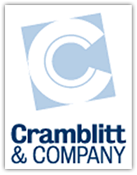Five authentic tips (how not to be a schmuck)
September 20th, 2009 | 1 Comment
I thought it would die a pleasant death, like interest in Paris Hilton after she became a good girl, but it’s not: Authentic is still embedded in the minds of the American business world, especially among PR and marketing people.
The way authentic is being practiced reminds me of a Mad magazine cartoon from the late 60s. A guy’s walking down the street while kids snicker, “What a schmuck!” Guy gets home, looks himself in the mirror and says “People think I’m a schmuck because I dress like a schmuck.” In the final frame, he’s walking down the street dressed for success like Hugh Hefner (tweed jacket with elbow patches, ascot and pipe) while kids snicker in the background, “What a schmuck!”
What authenticity ain’t
Authenticity isn’t about dressing yourself in new clothes or describing yourself as authentic. It’s not saying “honestly” or “truly” in your press releases and speeches. And it’s definitely not posting a picture of your CEO on the website wearing distressed jeans and a retro t-shirt or pursuing his or her rock-climbing hobby.
What it is
Authentic is what someone else feels instinctively about your organization. What your customers say because all of your dealings with them are embedded with integrity. What the media says because you’re honest and upfront with them. What employees say because they are valued and treated fairly.
If you are doing the above, your company will automatically benefit from word of mouth. But, if you want to extend that, here’s five ways you can ensure authenticity in your communications.
1. Remove adjectives and cliches from your marketing and PR materials, unless you are quoting third parties such as customers and/or analysts.
2. Use clear prose and illustrations to help customers, partners and media understand what you do — don’t hide behind bloated corporate speak.
3. Communicate openly with your customers and employees; take what they suggest, consider it, act on it and thank them for the input.
4. Care about the community of people who use your products and services; provide programs and forums that help them improve professionally and personally.
5. Don’t take yourself so seriously. Show a sense of humor in your communications whenever appropriate.
No amount of rhetoric can buy authentic. If your organization’s values are not strong, no matter what you say, you won’t be able to hide the inner schmuck.

